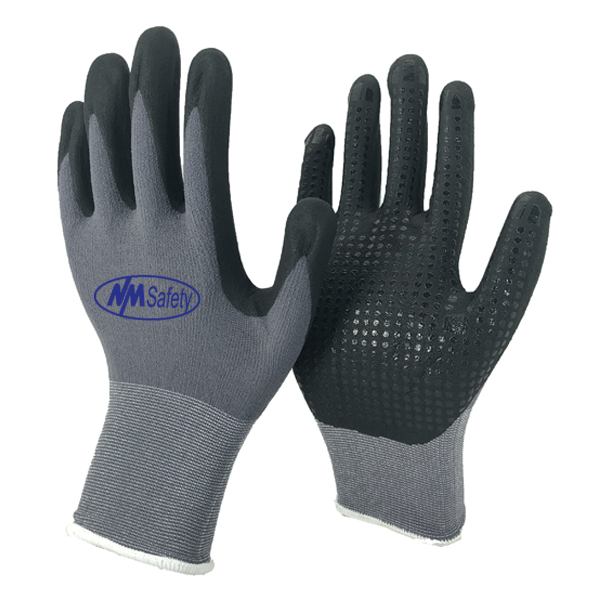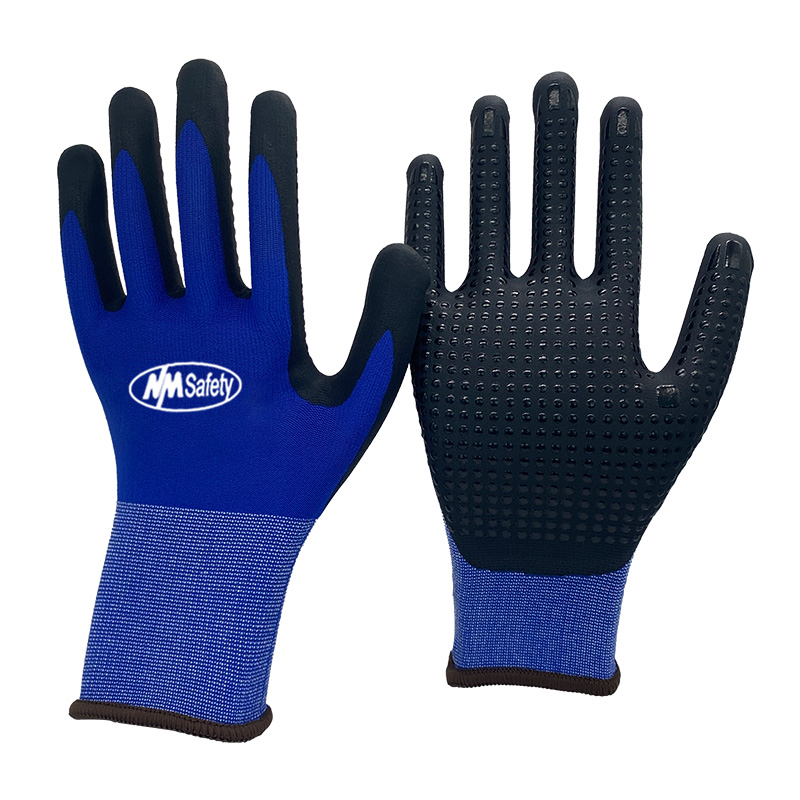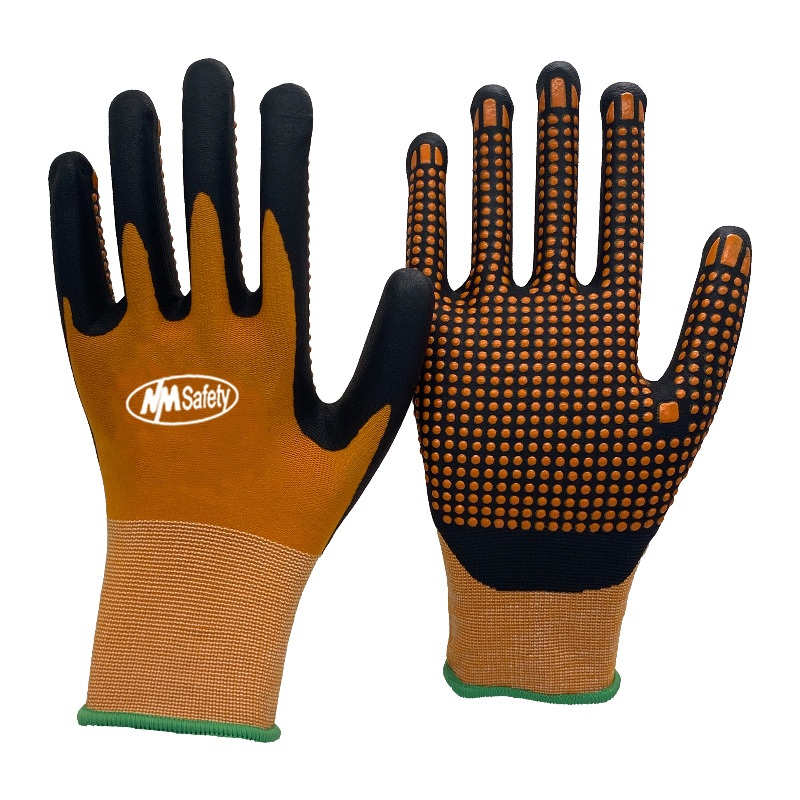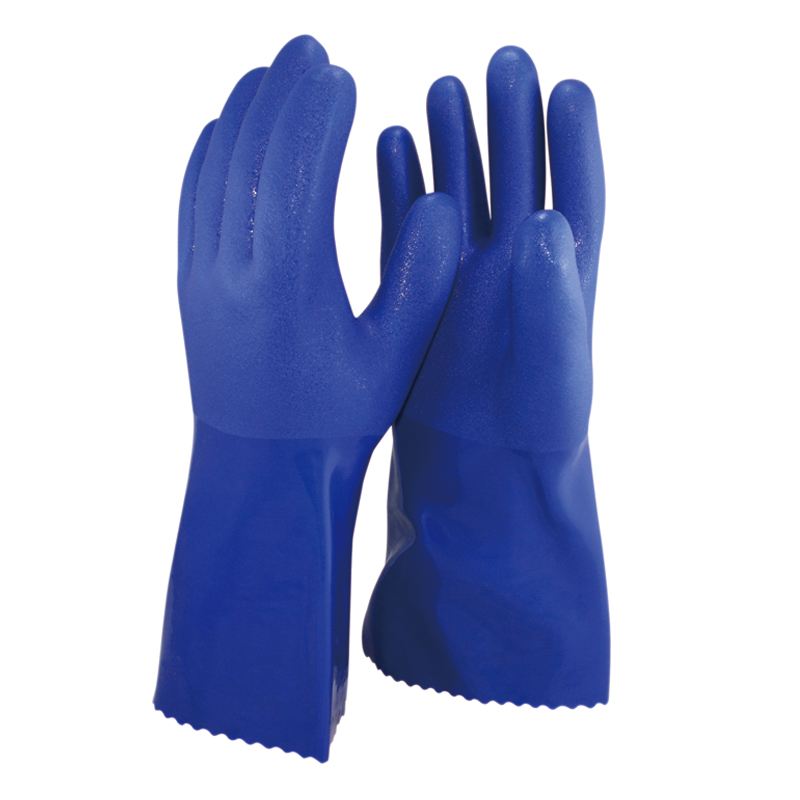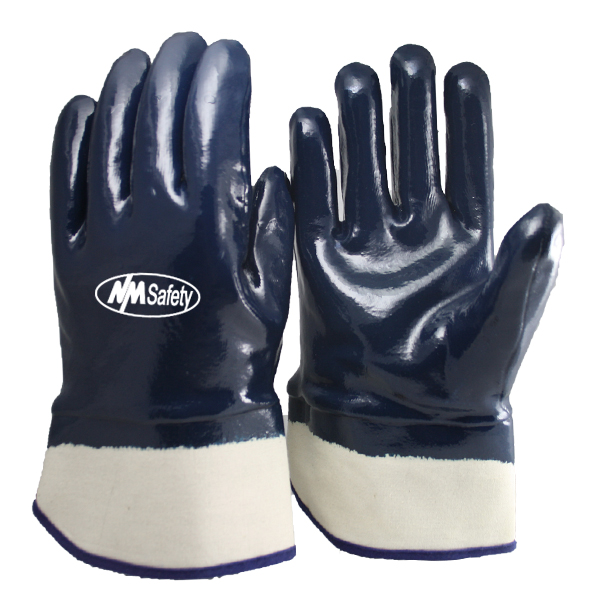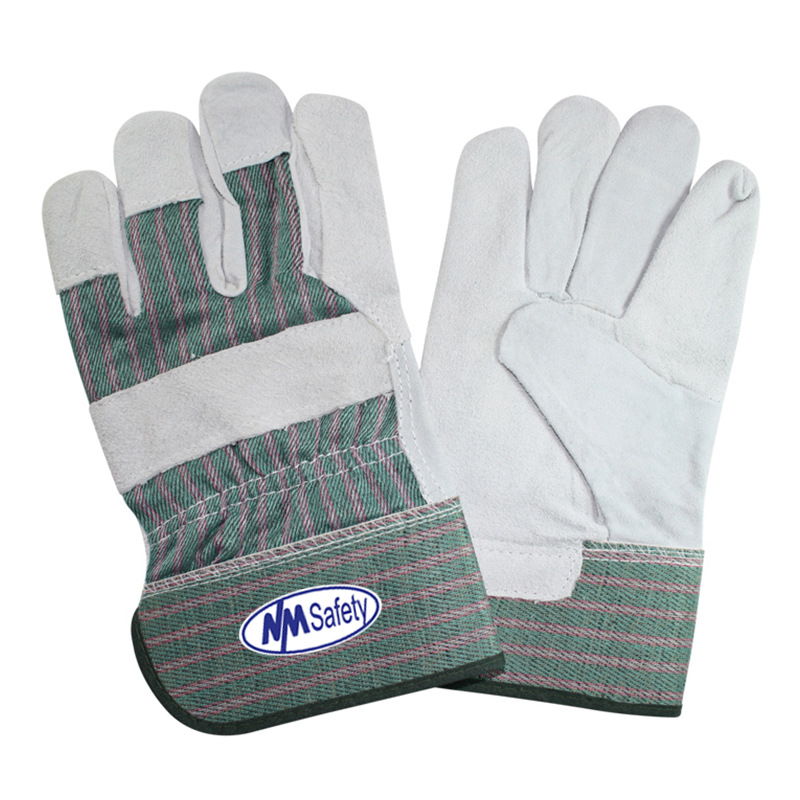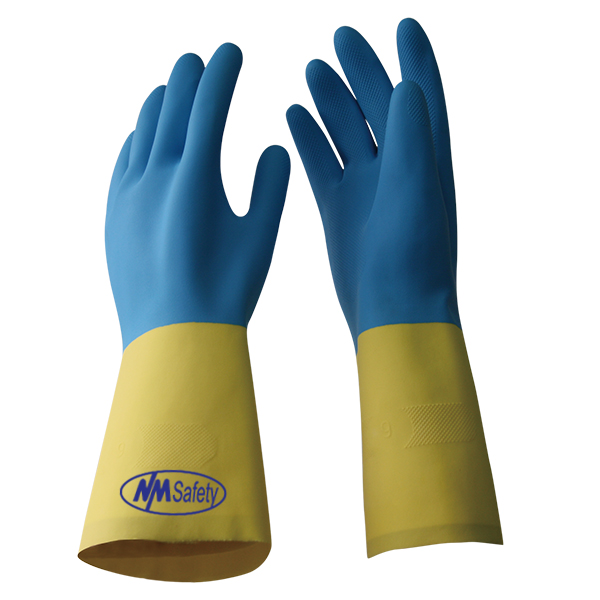Foam Nitrile Coated Gloves: Foam Nitrile Coated Gloves, give you the working of a sponge. They are designed for work that requires precision, as well as dexterity and sensitivity. They're comprised of Butadiene and Acrylonitrile, which provides a soft and lightweight barrier for your hands against occupational risks including chemicals and abrasion. Nitrile coated gloves are inexpensive, long-lasting, and of excellent quality. Antistatic gloves are commonly used in optics, aerospace engineering, electronics, telecommunications, and the petrochemical industry. They are specially developed for manipulating sensitive films, electronic components, circuit boards, and precision equipment.
The Fundamentals of Foam Nitrile Coated Gloves Nitrile Dots: The ultimate purpose of a Nitrile coated glove is to reduce static electricity in a certain work setting, such as when working with delicate electronics or on a gas line. Many nitrile dot palm glove producers, on the other hand, mention whether a glove is suited for handling or assembly. Handling gloves are designed to protect the hands of the operator, whereas assembly gloves safeguard delicate products from contamination and damage. Coated foam nitrile gloves should be regarded as necessary safety equipment for most laboratories, cleanrooms, biotech, and electronic work. However, to ensure the lowest possible risk of electrostatic discharge, Nitrile coated gloves must be used in conjunction with a grounding wrist strap.
Materials of Gloves: Nitrile coated gloves exist in a variety of shapes and styles, each of which influences the glove's final use and price. Gloves are often made of the following materials:
Latex is by far the most cost-effective and extensively utilized ESD glove material. Their main downside is that they are not suitable for persons who are allergic to latex.
Vinyl is a good alternative for latex-allergic workers, it is not as puncture-resistant or durable as latex.
Nitrile gloves are long-lasting, naturally anti-static, and puncture-resistant. Because they are composed of synthetic latex, they can be worn by anyone who is allergic to latex. Nitrile gloves, on the other hand, are more expensive than vinyl or latex gloves.
The fabric allows you to re-use gloves, which can save you a lot of money compared to disposable gloves.
It should be noted that different glove materials can be hazardous when used with certain chemicals; for example, nitrile gloves, while durable and free of latex allergies, are not suitable for use with ketones or aromatic solvents. As a result, your specific work environment may necessitate the use of two or more types of gloves to provide the best protection for both people and products.
Nitrile coated gloves are also provided by several manufacturers to their cleanroom staff. These teeny-tiny gloves come in a range of fabrics and provide more dexterity than full-sized gloves. Finger cots, on the other hand, should only be used in situations where workers will not be using hand tools.
What to Look for When Buying Nitrile coated gloves: When choosing a foam nitrile gloves solution for your business, keep the following five criteria in mind:
1. Employee safety concerns, especially if they have latex allergies.
2. Chemicals commonly found in the workplace and how they may affect glove use
3. The glove's overall goal (assembly versus handling)
4. The maximal electrical resistance of a glove
5. Over time, the cost of new gloves will increase.
Purpose of Foam nitrile gloves: Have you ever felt a small amount or current of energy pass through your hand when you touched another person's skin? This is known as electrostatic discharge, or "ESD," which is the release of static energy that has accumulated in our bodies. When an electrostatic discharge occurs, the tiny current you feel is 3,500 volts of static energy being released. This current is the lowest we've ever felt. When working with static-sensitive equipment or components, such as PC components or smartphone repairs, it is recommended to use Fingertips Coated Gloves.
ESD-Safe Gloves: What Are They? ESD-safe nitrile dot palm gloves
safeguard electronic products and employees from the dangers of static electricity. Electro-static dissipative (ESD) gloves are suited for usage in cleanrooms (microelectronics) and the electronics manufacturing industries.
In low humidity and particle-sensitive situations, anti-static gloves are commonly utilized. Because static charges can harm delicate electronics parts, ESD-safe gloves are commonly used when handling and assembling electronic gadgets.
Are synthetic latex gloves good? Synthetic latex is a blend of Butadiene and Acrylonitrile with a wide range of applications, including its use as an adhesive and as a material for gloves and other garments. By adding catalysts, blowing agents, and flame retardants to the chemical composition, Butadiene and Acrylonitrile can be manufactured in a variety of shapes.
Benefits of Nitrile coated gloves: So, what is it about foam nitrile gloves that appeal to people so much? What is it about these gloves that have made them such a popular item in the industrial industry?
1. These gloves can be made thinner in the following ways:
Depending on the liner used, these gloves may be thinner than standard work gloves. What makes this a superior choice? It's because it provides your hands with additional dexterity. These gloves are more pleasant to wear because they are thinner. It's a great option for industries where workers need to feel what they're doing, like the automotive industry or industries that create or assemble little goods.
2. They are cost-effective: Foam nitrile gloves -coated gloves are more cost-effective in a firm where a significant quantity of these gloves must be used regularly. The cost of nitrile coated gloves varies based on the thickness of the material and the type of liner used, but if you have a set budget in mind, you'll be able to find gloves that meet your needs. Even the highest-quality nitrile dot palm gloves are only a third of the cost of general-purpose gloves.
3. They have a good grip: The Butadiene and Acrylonitrile coating on these gloves gives them a sticky surface. As a result, it will provide a better and more effective grip, which is suitable for businesses that deal with slippery and smooth objects.
Conclusion: Nitrile-coated gloves are appropriate for any electronic assembly task that involves skin contact, such as handling microelectronics, PC and laptop repair, or assembly where ESD is an issue. Even if you are properly grounded, touching an electrostatic discharge (ESD) sensitive gadget can result in a destructive discharge. One technique to slow down and manage the discharge is to increase the contact resistance of the electrical channel. Wearing anti-static gloves is an excellent approach to do this. NMSafety provides you with the best Fingertip coated gloves in the market at the best price.





